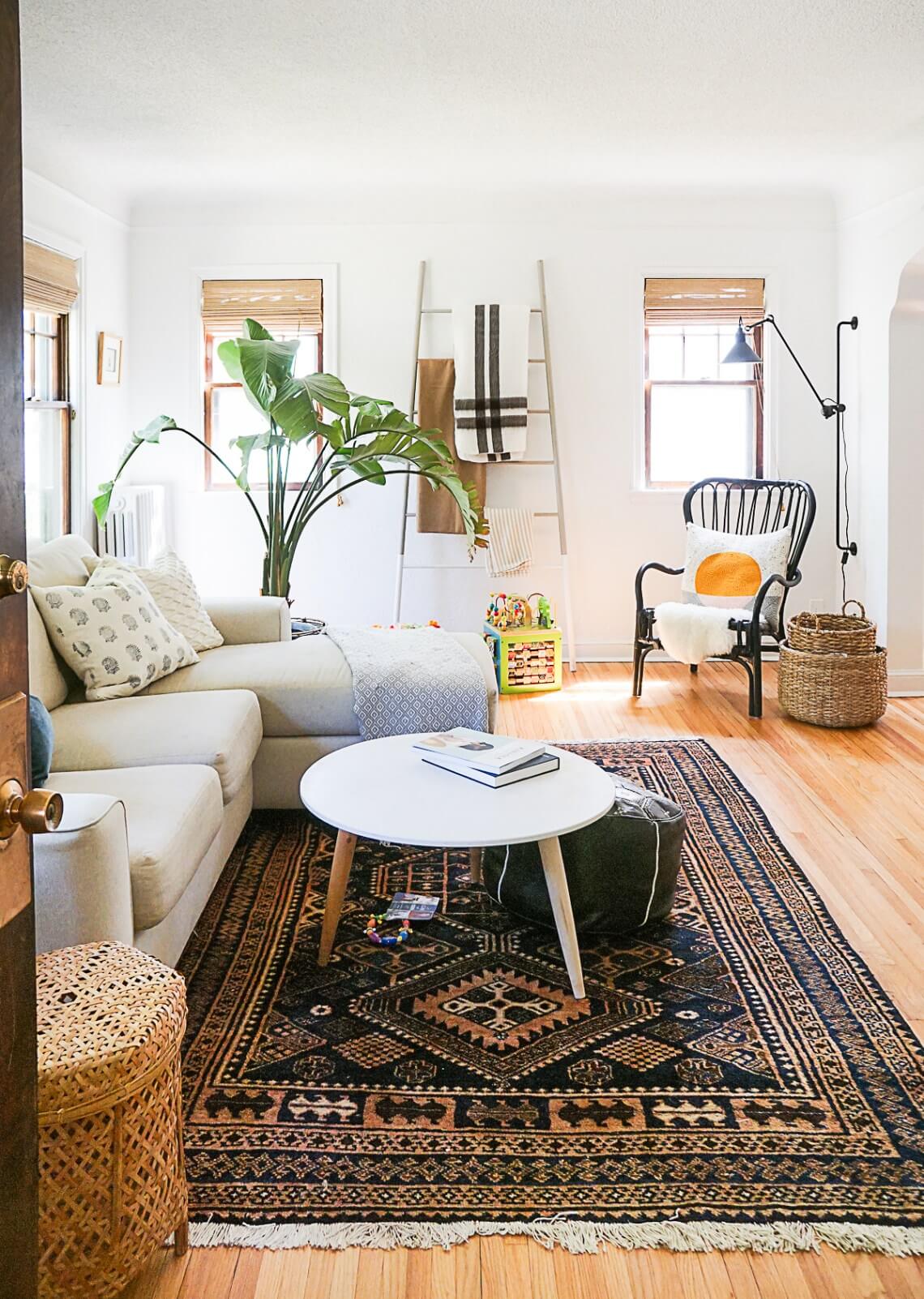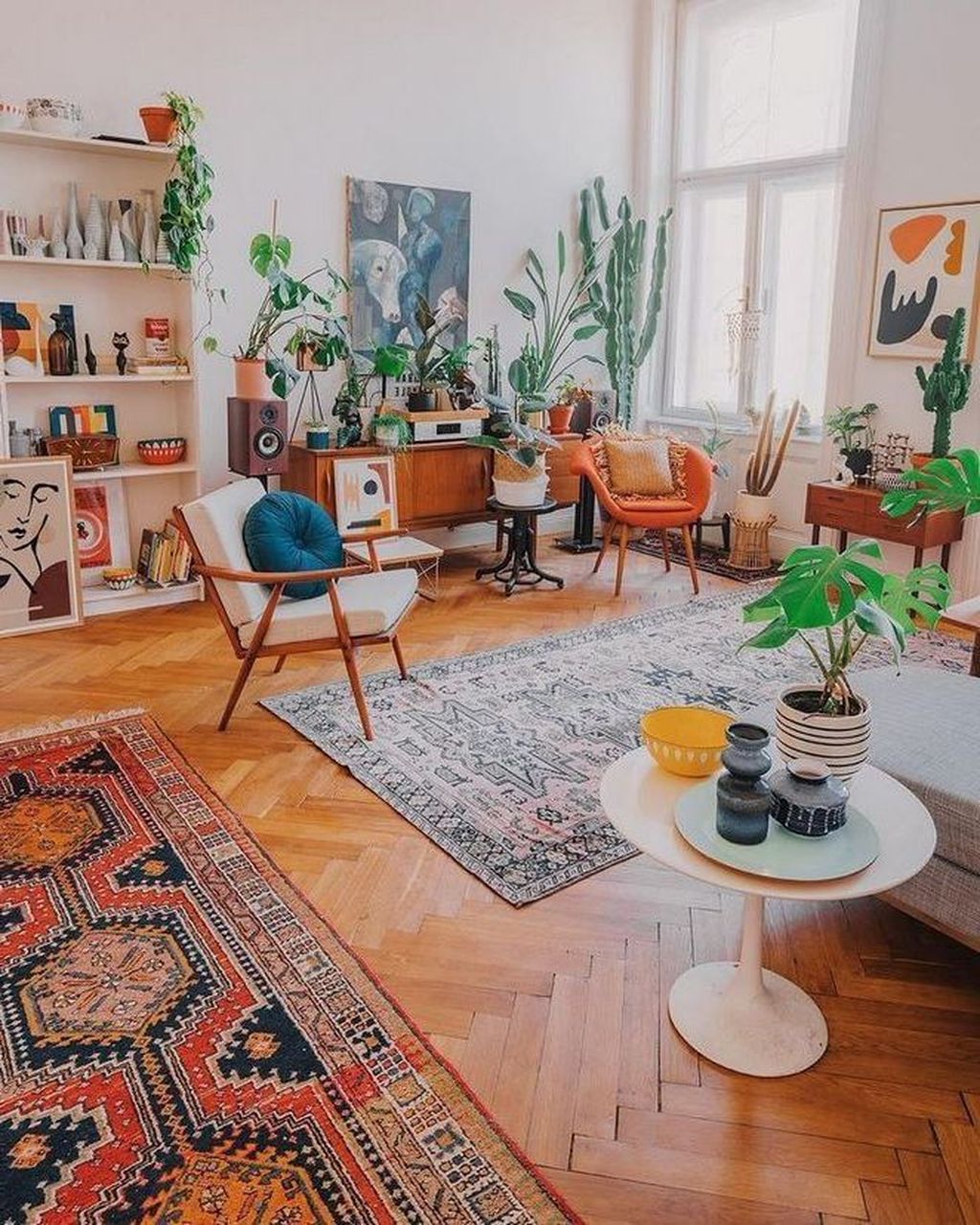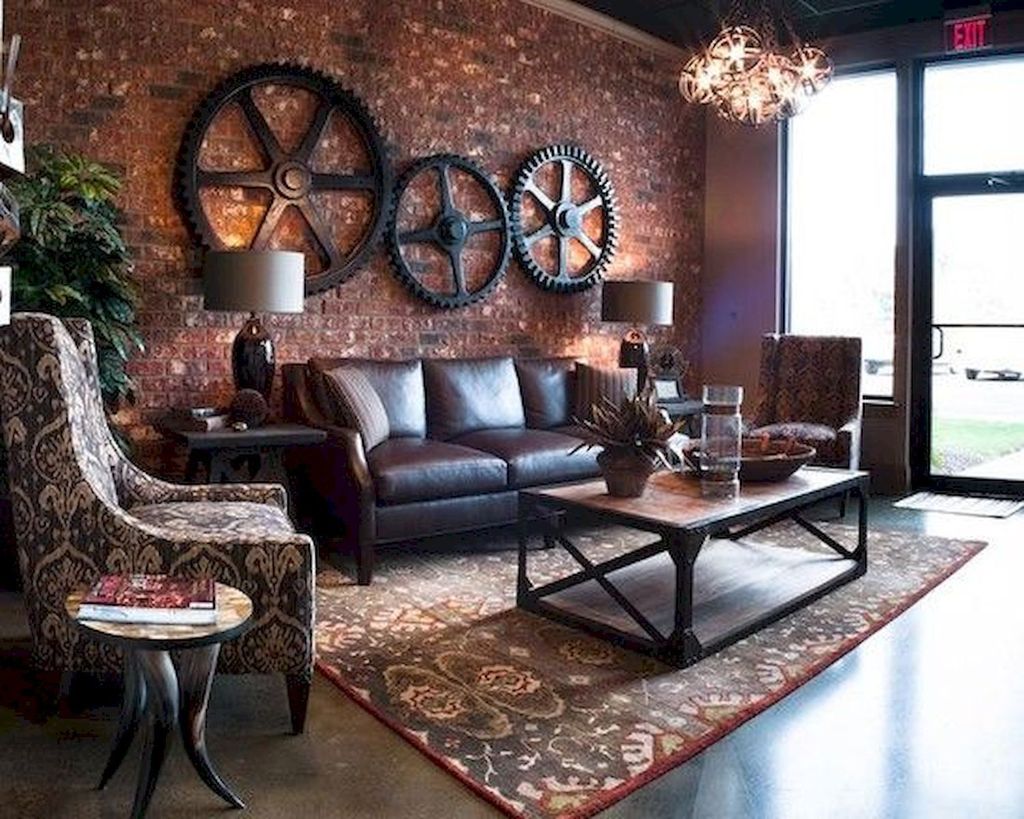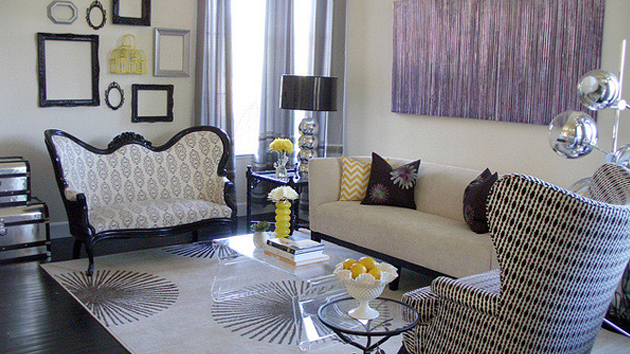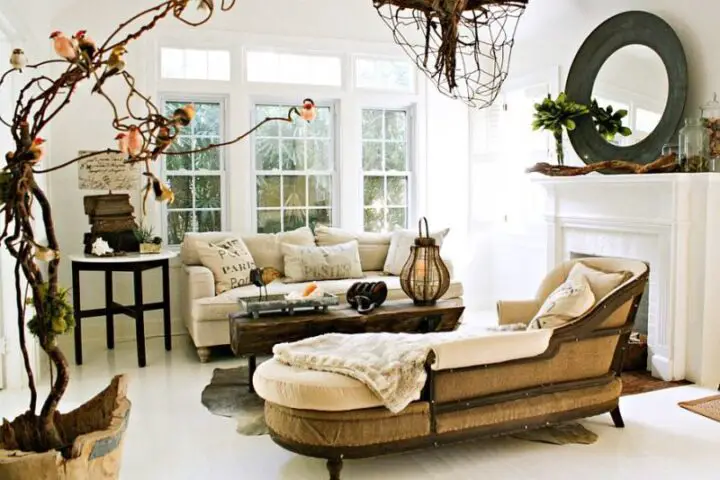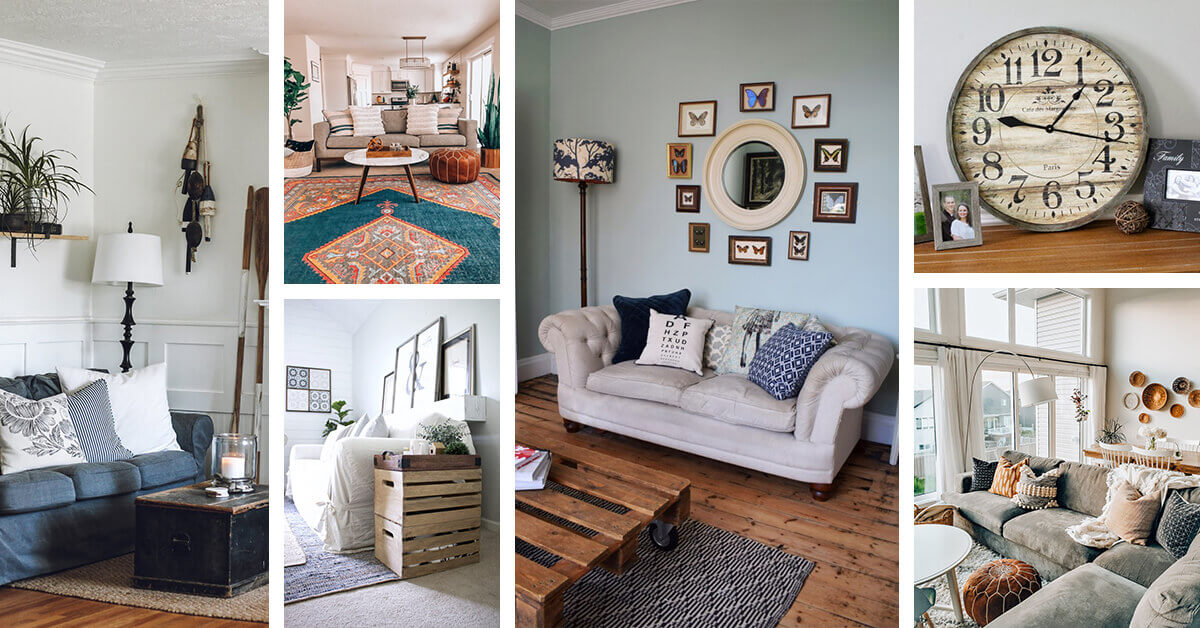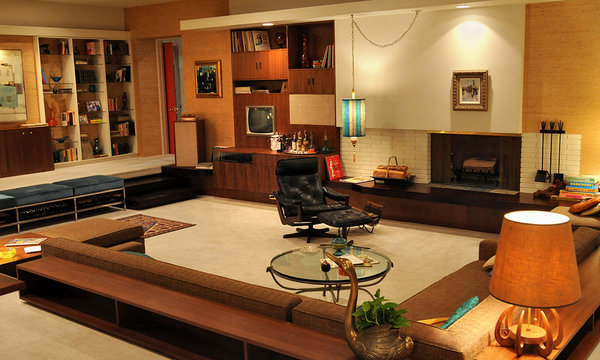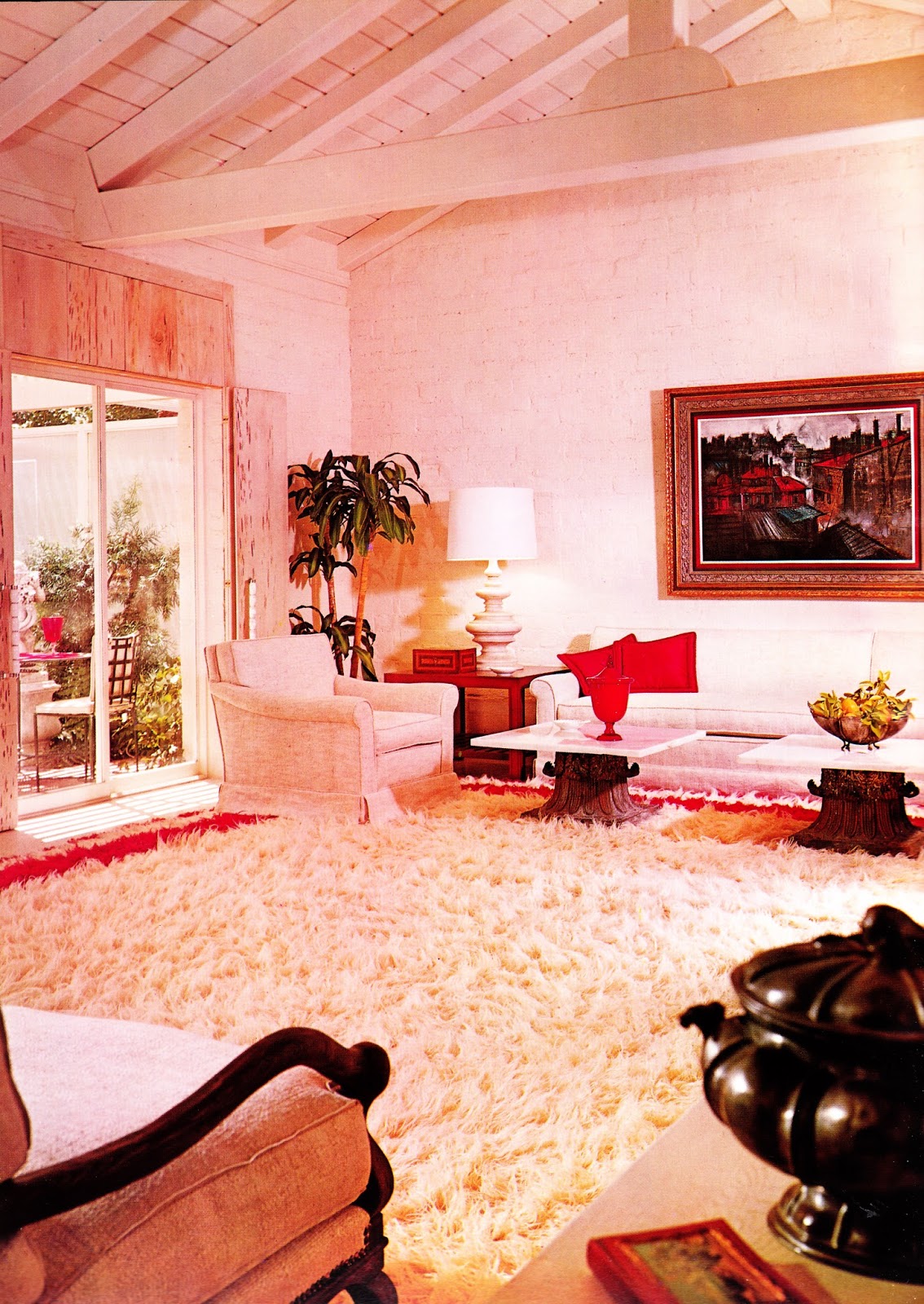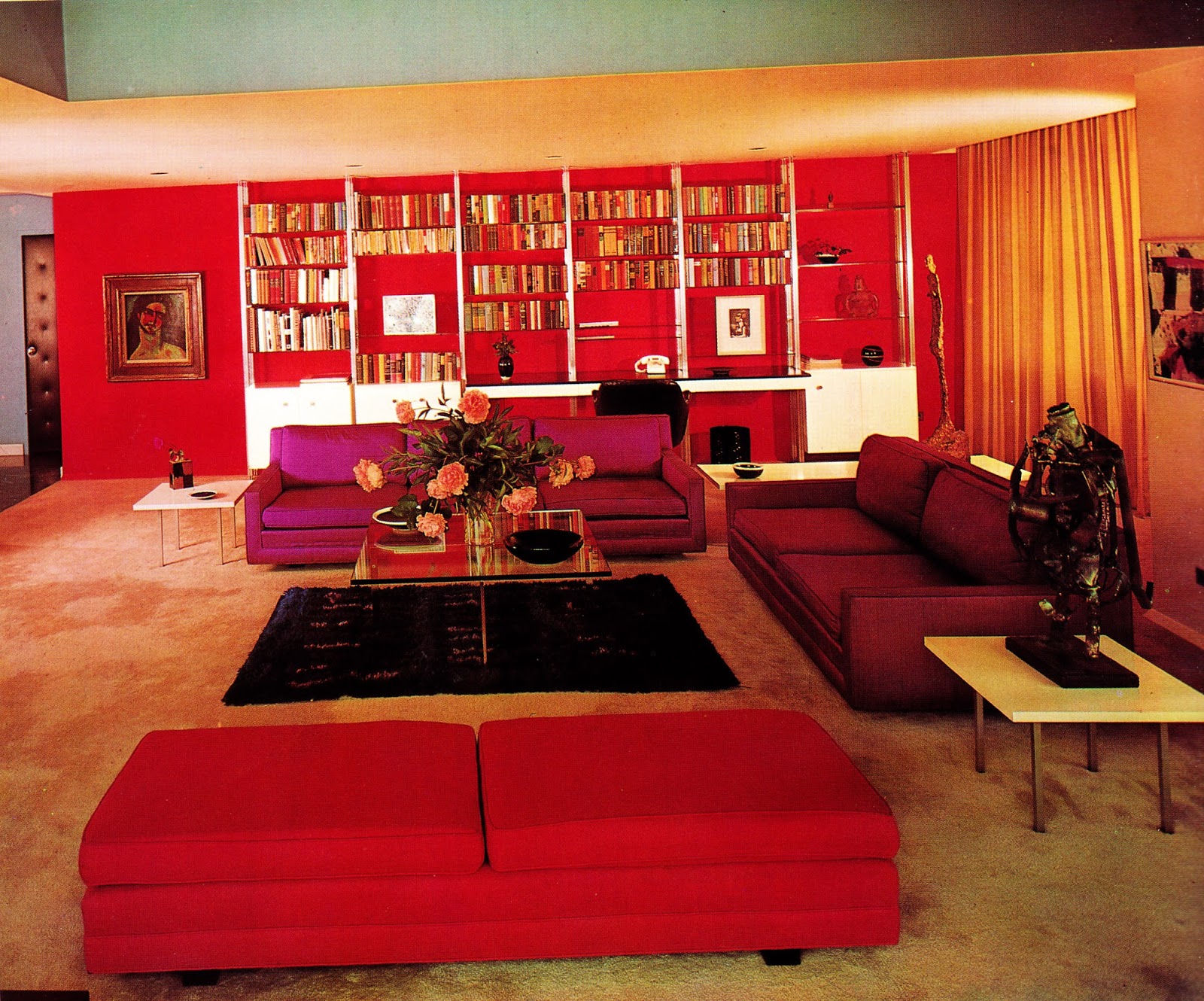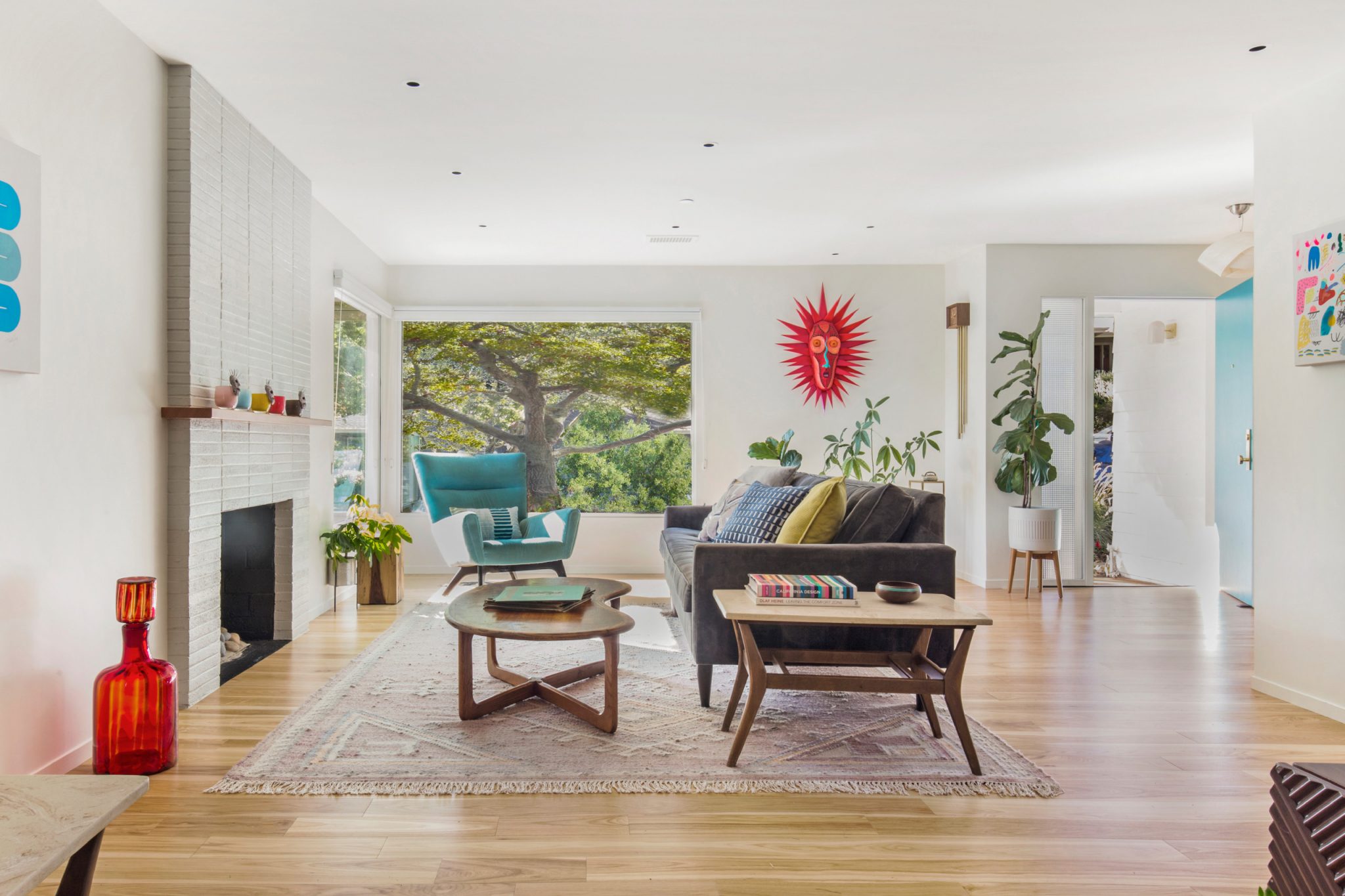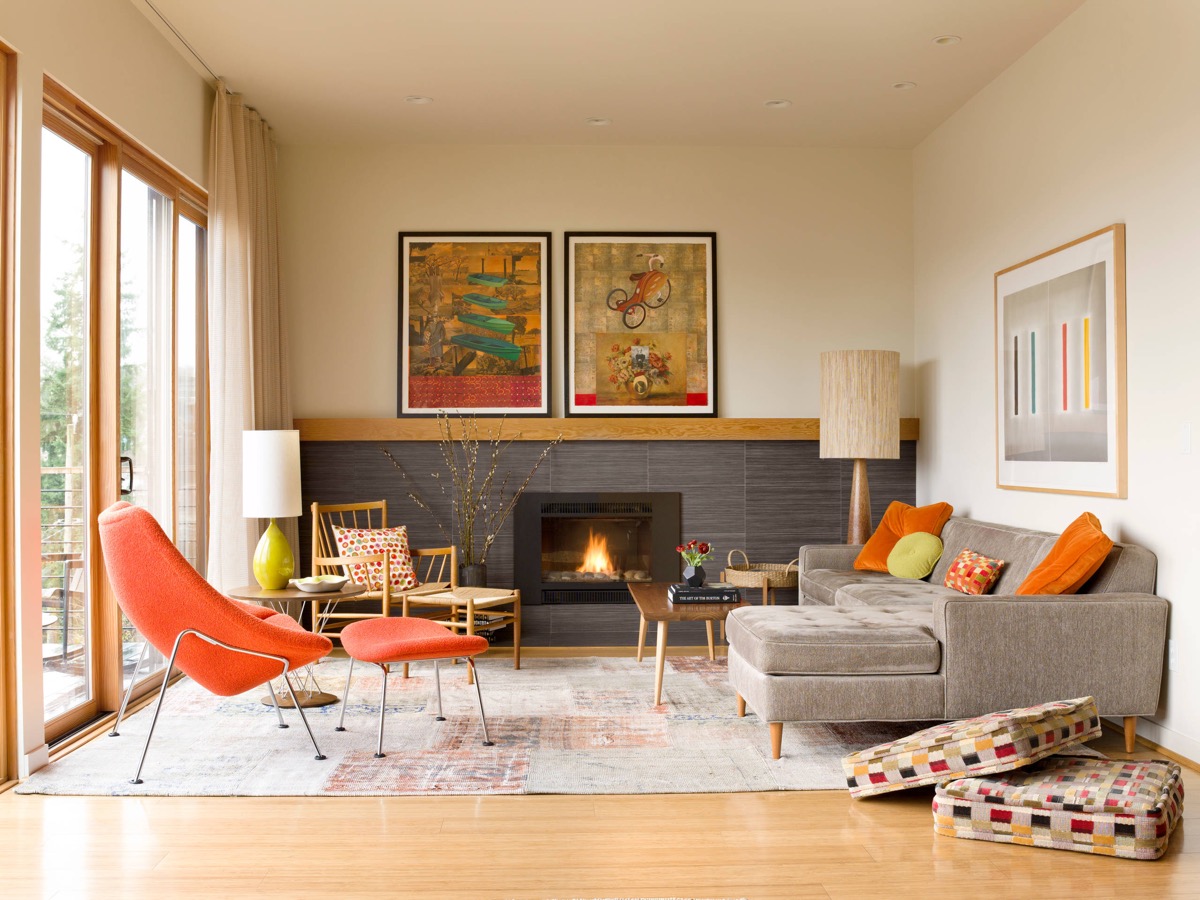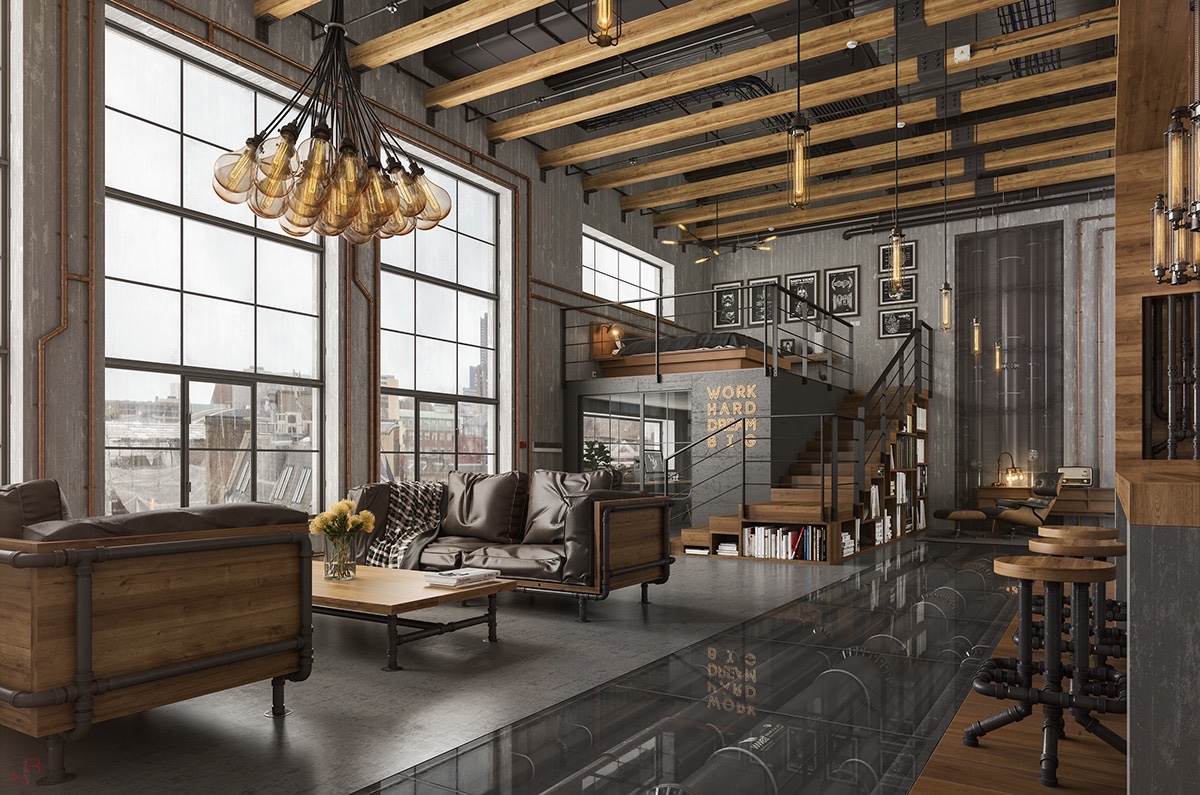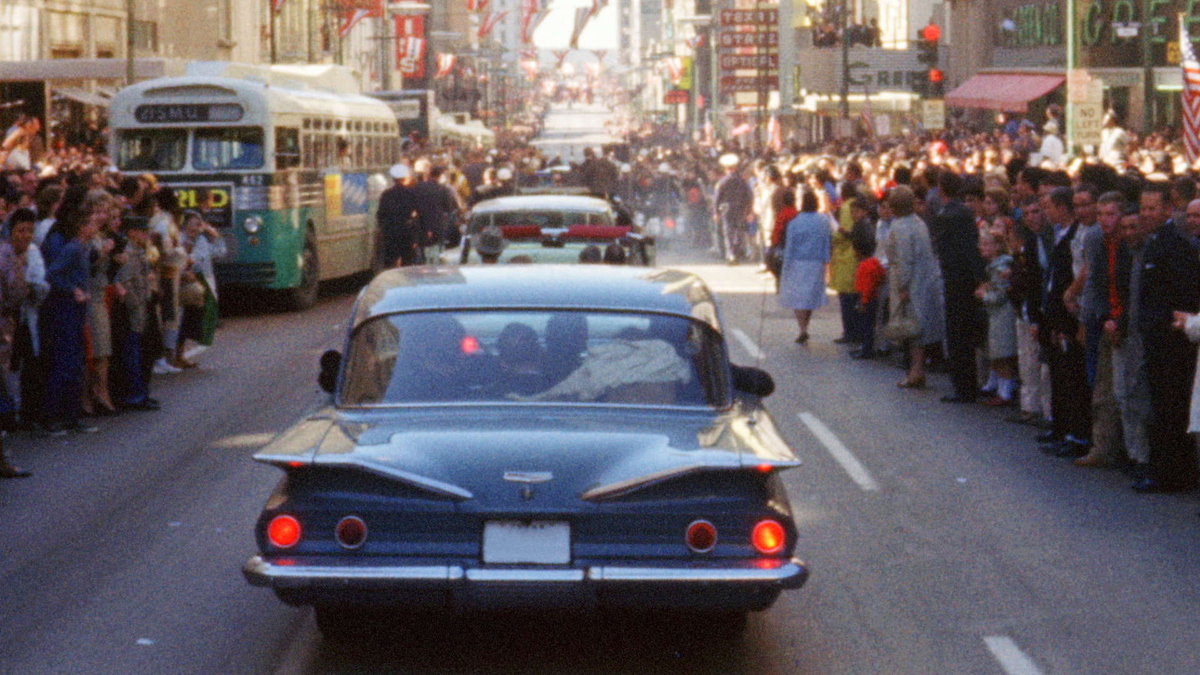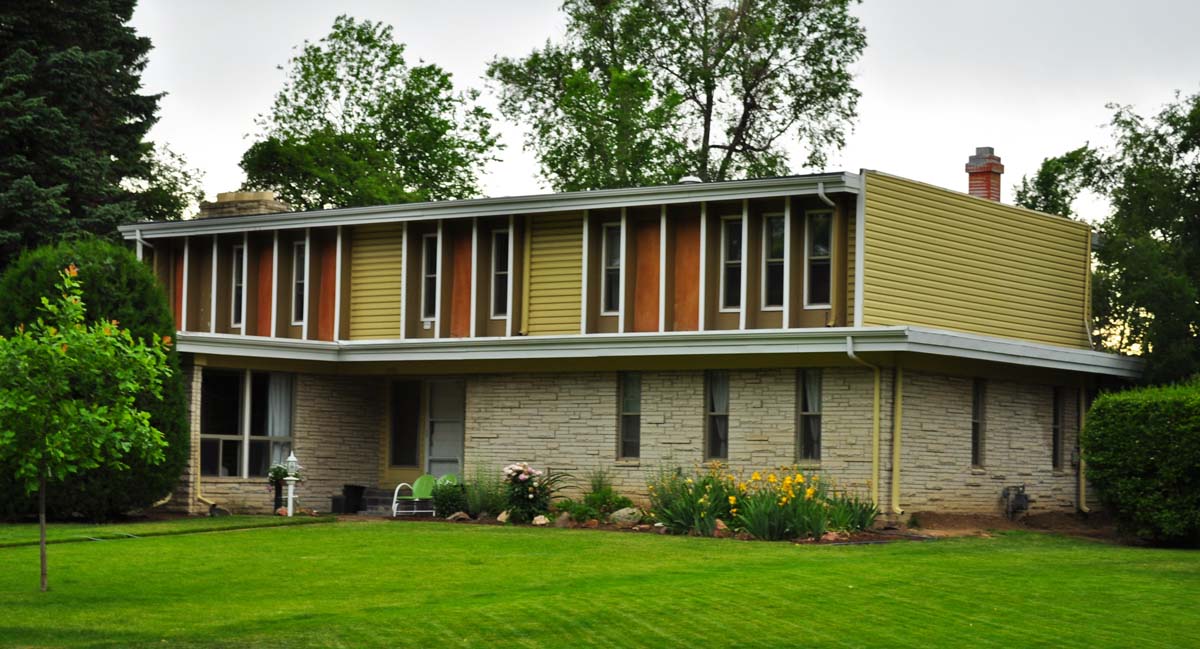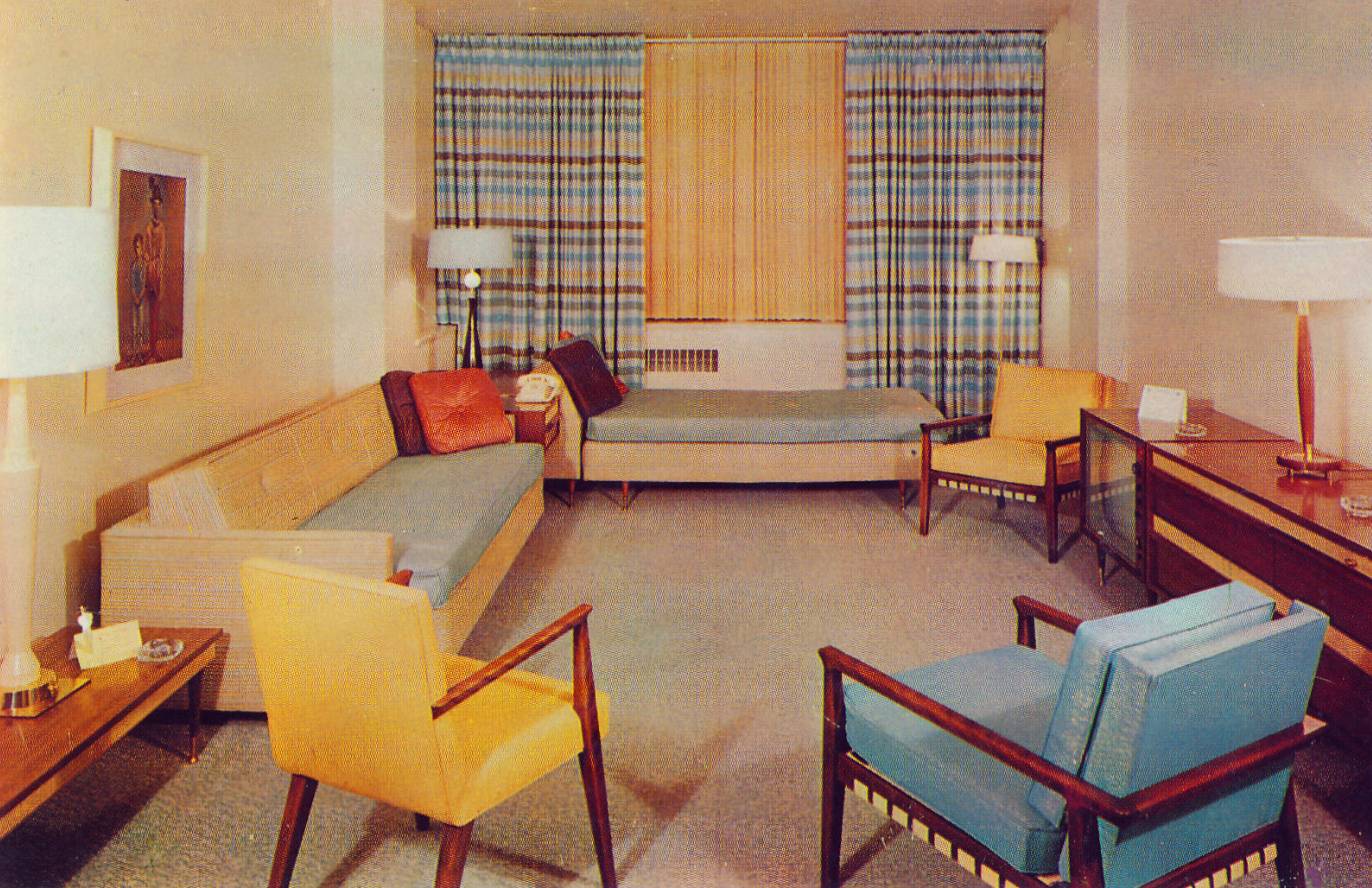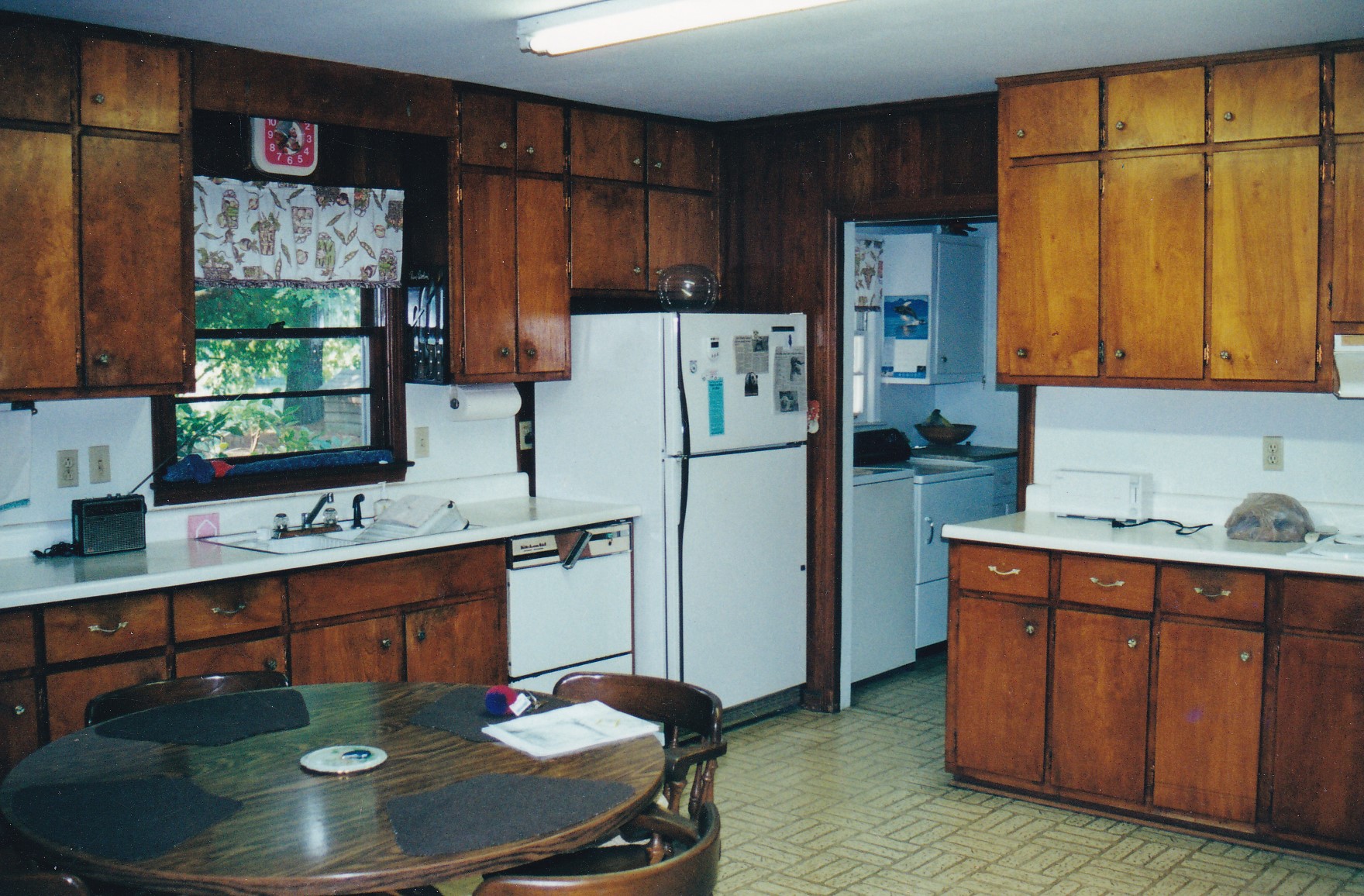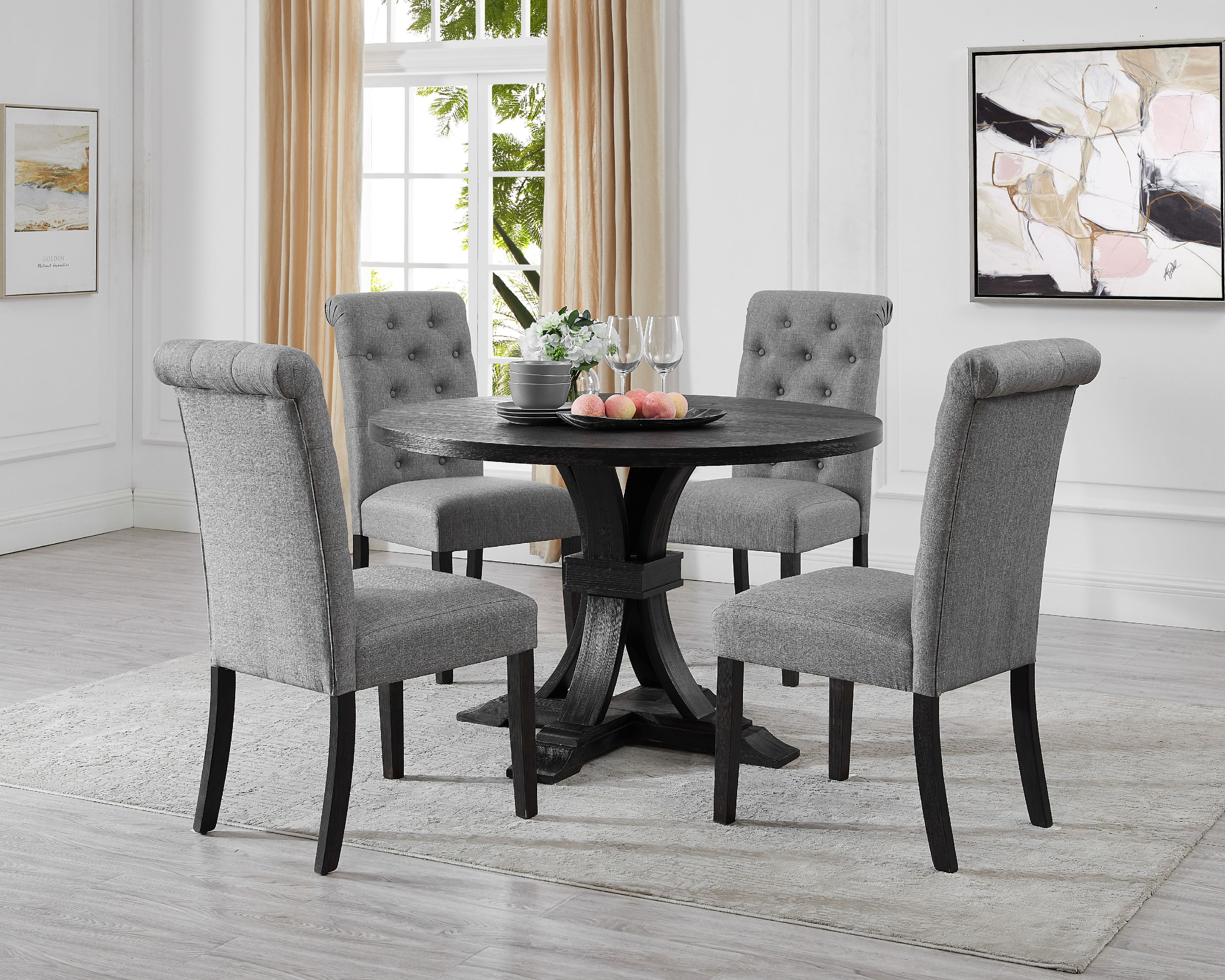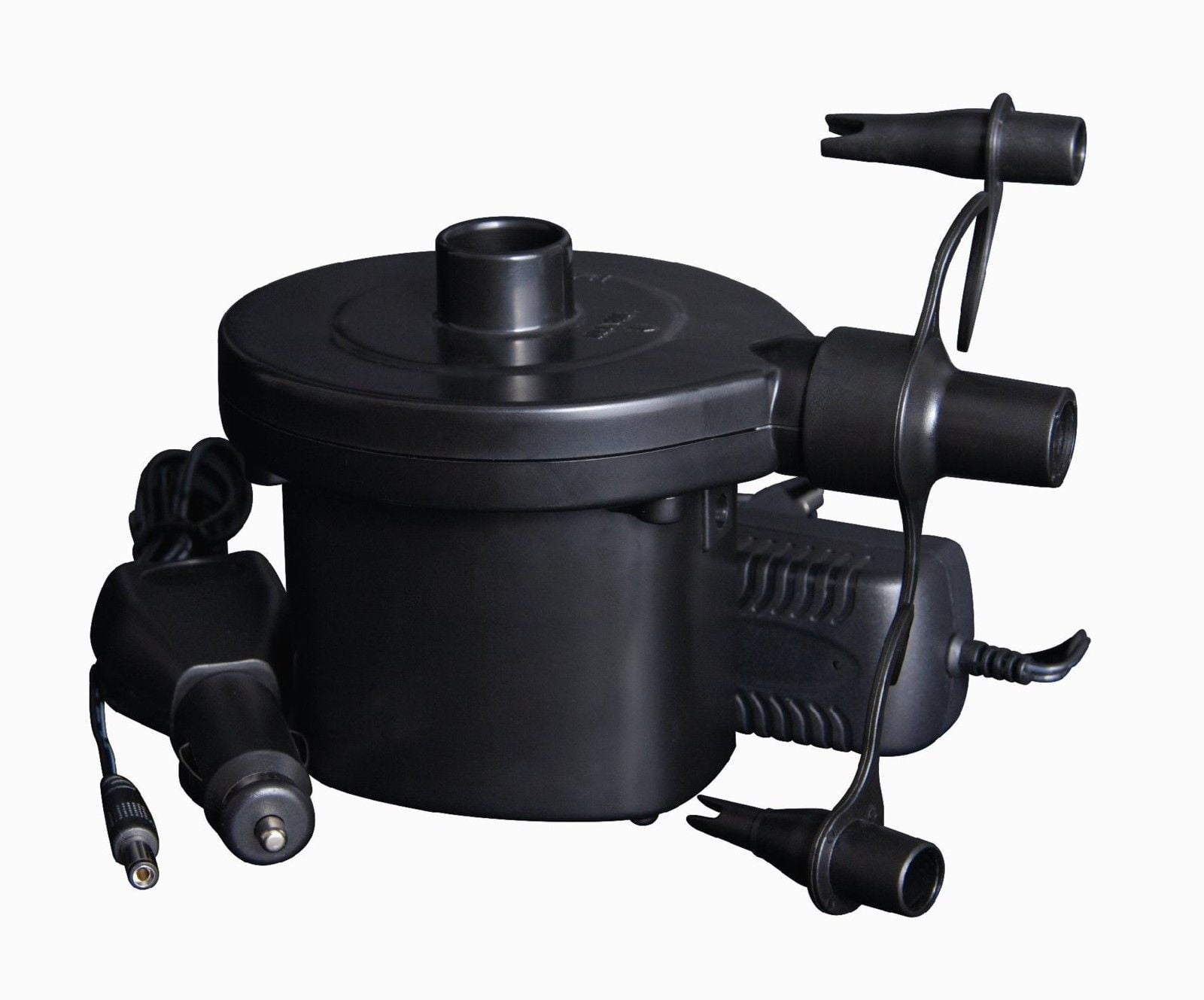The 1960s was a pivotal decade for American interior design, and one style that has stood the test of time is the mid-century modern living room. This design aesthetic is characterized by clean lines, geometric shapes, and a blend of natural and man-made materials. The result is a space that exudes both simplicity and sophistication, making it a popular choice for homeowners looking to create a stylish and timeless living room. One of the key features of a mid-century modern living room is the furniture. Iconic pieces from this era include the Eames Lounge Chair, the Tulip Table, and the Egg Chair, which are still sought-after and highly coveted today. These pieces are not only functional but also serve as statement pieces that add character and personality to the space. When it comes to color palettes, neutral tones such as white, black, and gray were popular in the 1960s, but pops of bright, bold colors were also incorporated to add a playful touch. This blend of muted and vibrant hues creates a balanced and visually appealing look for the living room. Wood and other natural materials were also commonly used in mid-century modern design, adding warmth and texture to the space. This can be seen in the use of teak wood for furniture and accents, as well as woven materials for rugs and accent pieces. These elements bring a sense of nature into the living room, creating a cozy and inviting atmosphere.Mid-Century Modern Living Room
The 1960s was a time of change and innovation in American home decor. Traditional styles and designs were being challenged, and new ideas and trends emerged. This decade saw a shift towards more modern and streamlined designs, with a focus on functionality and simplicity. Pop art was a major influence on home decor during this time, with its bold colors and graphic prints making their way into living room design. This can be seen in the use of geometric patterns on upholstery and wall art, as well as abstract paintings and sculptures as decorative accents. Shag carpets and textured walls were also popular in 1960s American home decor, adding a cozy and playful touch to living rooms. These elements not only added visual interest but also provided a sense of comfort and warmth to the space. Another defining feature of 1960s American home decor was the use of futuristic and space-inspired elements. This can be seen in the use of chrome accents, plastic furniture, and bold lighting fixtures, all of which added a touch of modernity and innovation to living room design.1960s American Home Decor
The 1960s was a decade of nostalgia and a return to retro designs. This is reflected in the retro living room design trend, which takes inspiration from the styles and designs of the past, particularly from the 1950s and 1960s. Vintage furniture and decor pieces are key elements in retro living room design. This includes mid-century modern furniture, vintage posters, and retro-inspired accessories. These pieces not only add character and charm to the space but also serve as a nod to the past. The color palette for a retro living room typically includes bold and vibrant hues, such as orange, green, and yellow, as well as fun patterns and prints. This creates a lively and energetic atmosphere in the living room, evoking a sense of nostalgia and playfulness. Retro living room design also often incorporates quirky and unique decor pieces, such as record players, lava lamps, and vintage telephones. These elements add a touch of fun and nostalgia to the space, making it a unique and inviting place to gather and relax.Retro Living Room Design
The 1960s saw a major shift in furniture design in America. Traditional and ornate styles were replaced by modern and functional pieces that were reflective of the changing times. Clean lines and geometric shapes were key elements of 1960s American furniture design. This can be seen in simple and sleek sofas, chairs, and tables that were designed to be both stylish and practical. Another defining feature of 1960s American furniture was the use of innovative and unconventional materials. This includes plastic, fiberglass, and acrylic, which were used to create unique and eye-catching pieces that were unlike anything seen before. One of the most iconic furniture pieces from the 1960s is the Egg Chair, designed by Arne Jacobsen. This futuristic and sculptural piece became a symbol of the modern and forward-thinking design of the decade and is still highly sought-after today.1960s American Furniture
If you're a fan of vintage and retro styles, incorporating vintage living room ideas into your home decor is a great way to add character and charm to your space. The 1960s was a decade of bold and playful design, and there are many ways to incorporate this aesthetic into your living room. Mixing and matching retro furniture pieces is a great way to create a vintage-inspired living room. This can include a retro sofa paired with a mid-century coffee table, or a vintage armchair with a colorful rug. By blending different eras and styles, you can create a unique and eclectic space. Another vintage living room idea is to incorporate retro-inspired wallpaper or wall art. This can add a pop of color and pattern to the space, evoking a sense of nostalgia and fun. You can also repurpose vintage items as decor pieces, such as old suitcases as coffee tables or vintage record players as decorative accents. Overall, vintage living room ideas allow you to create a space that is both stylish and personal, giving your home a unique and timeless touch.Vintage Living Room Ideas
The popular TV show Mad Men brought the 1960s back into the spotlight, inspiring many to incorporate elements of the show's iconic design into their own homes. A Mad Men inspired living room is all about capturing the sleek and sophisticated style of the era, while also incorporating elements of the show's characters and storylines. Rich and dark colors, such as deep blues, greens, and reds, are key to creating a Mad Men inspired living room. These colors evoke a sense of luxury and opulence, reflecting the affluent lifestyle of the show's characters. The furniture in a Mad Men inspired living room is typically mid-century modern, with a focus on clean lines and geometric shapes. Leather and velvet are also commonly used materials, adding a touch of texture and luxury to the space. Lastly, vintage and retro accents are important in a Mad Men inspired living room. This can include vintage bar carts, old-fashioned telephones, and mid-century artwork, all of which add to the overall aesthetic and bring the show's characters to life in your home.Mad Men Inspired Living Room
The 1960s was a decade of change and innovation in American interior design. Traditional and ornate styles were giving way to modern and functional designs that reflected the changing times. This era saw a shift towards simplicity, functionality, and a blend of natural and man-made materials. Open floor plans were a major trend in 1960s American interior design, with rooms flowing seamlessly into one another and creating a sense of space and openness. This allowed for more natural light and a greater connection to the outdoors, making the home feel more inviting and connected to nature. Indoor-outdoor living was also a popular concept in 1960s American interior design. This involved bringing elements of the outdoors inside, such as using natural materials like wood and stone, as well as incorporating large windows and sliding glass doors. This created a seamless transition between indoor and outdoor spaces, allowing homeowners to fully embrace the beauty of nature. Minimalism was also a key element of 1960s American interior design, with a focus on clean lines, simple shapes, and a neutral color palette. This minimalist approach allowed for a clutter-free and visually appealing space, highlighting the beauty of the furniture and decor pieces.1960s American Interior Design
The 1960s was a time of experimentation and boldness, and this was reflected in the retro color palette of the era. This decade saw a mix of bright and muted colors being used in home decor, creating a playful and lively atmosphere. Poppy red, mustard yellow, and bright green were popular choices for adding a pop of color to living rooms. These bold and vibrant hues were often used in furniture upholstery, wall art, and decorative accents, creating a fun and energetic look. Black and white was also a common color combination in retro design, creating a dramatic and sophisticated look. This can be seen in checkerboard patterns, black and white photography, and graphic prints, adding a touch of nostalgia and glamour to the living room. The retro color palette is all about embracing bold and playful hues, so don't be afraid to experiment and have fun with it in your own living room design.Retro Color Palette
The mod style of the 1960s was all about embracing modernity and innovation in design. This can be seen in the mod style living room, which incorporates elements of pop art, futuristic design, and a bold color palette. Key features of a mod style living room include geometric shapes, bold colors, and sleek furniture. This creates a space that is both visually striking and functional, reflecting the modern and forward-thinking mindset of the 1960s. Plastic and acrylic were commonly used materials in mod style living rooms, adding a touch of modernity and playfulness to the space. These materials were often used in furniture, lighting fixtures, and decorative accents, creating a cohesive and futuristic look. The mod style living room is all about embracing the bold and unconventional, making it a perfect choice for those who want to add a unique and cutting-edge touch to their home decor.Mod Style Living Room
If you're looking to give your home a 1960s American makeover, there are many ways to incorporate the iconic styles and designs of the era into your living room. This can range from small, subtle changes to a complete overhaul of the space. One of the easiest ways to give your living room a 1960s American makeover is to update your furniture. Look for mid-century modern pieces, vintage accents, and bold colors and patterns to create a retro and stylish look. You can also add retro-inspired wallpaper or wall art to create a focal point in the room and add a touch of nostalgia. Another option is to repurpose vintage items as decor pieces, such as old suitcases, record players, and retro telephones. Lastly, don't be afraid to play with color and pattern to create a lively and nostalgic atmosphere in your living room. By incorporating elements of 1960s American design into your home, you can give it a unique and timeless touch that will stand out for years to come.1960s American Home Makeover
The Evolution of the American Living Room in the 1960s

From Traditional to Modern
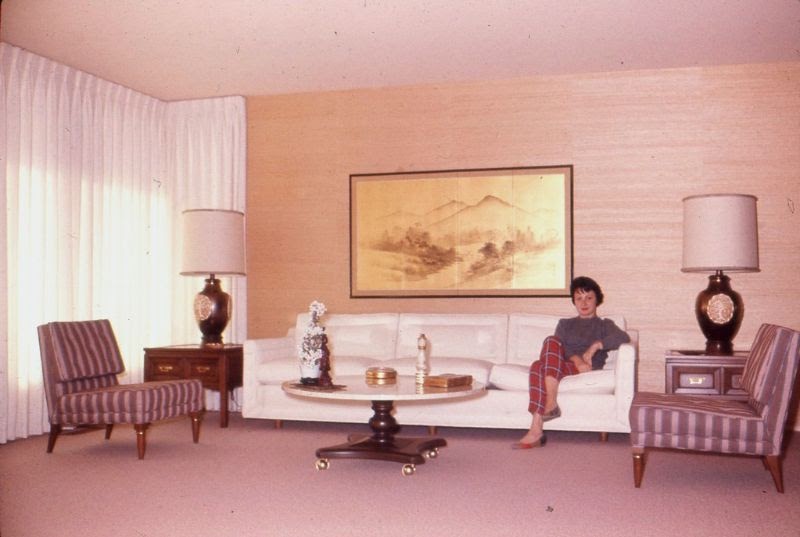 The 1960s marked a significant shift in American living room design. Gone were the traditional and formal styles of the previous decades, and in came a new era of modernity and innovation. The living room, also known as the “heart of the home,” became a reflection of the changing times and a place for self-expression and creativity.
The Influence of Mid-Century Modern Design
One of the major influences on the 1960s American living room was the rise of the
mid-century modern
design movement. This style was characterized by clean lines, minimalism, and functionality, and it quickly gained popularity in the post-war era. Mid-century modern furniture, with its sleek and simple designs, became a staple in many living rooms during this decade.
The 1960s marked a significant shift in American living room design. Gone were the traditional and formal styles of the previous decades, and in came a new era of modernity and innovation. The living room, also known as the “heart of the home,” became a reflection of the changing times and a place for self-expression and creativity.
The Influence of Mid-Century Modern Design
One of the major influences on the 1960s American living room was the rise of the
mid-century modern
design movement. This style was characterized by clean lines, minimalism, and functionality, and it quickly gained popularity in the post-war era. Mid-century modern furniture, with its sleek and simple designs, became a staple in many living rooms during this decade.
The Rise of Color and Pattern
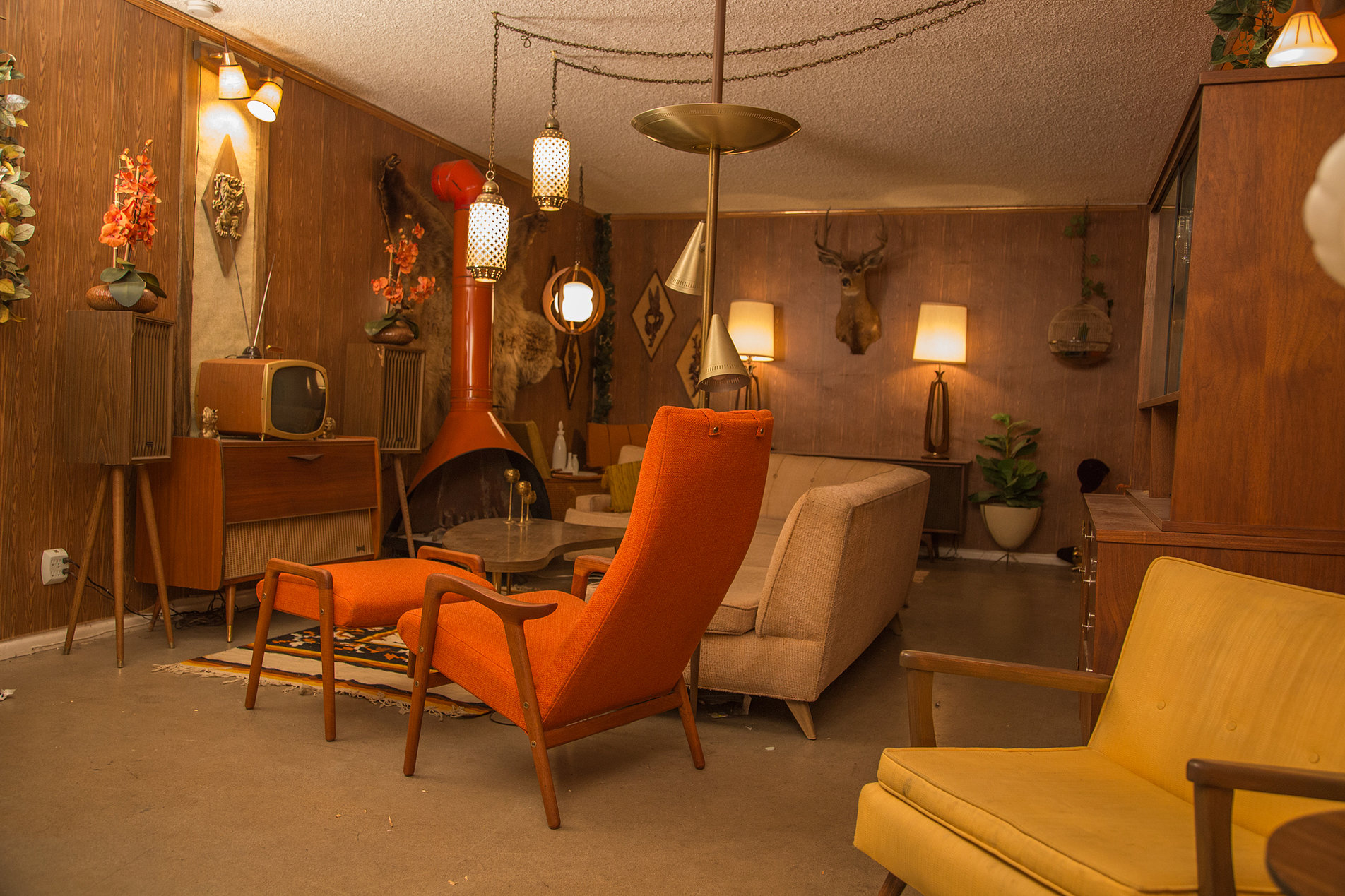 The 1960s also saw a shift towards using bold colors and patterns in living room design. This was a stark contrast to the neutral and subdued colors of the previous decades.
Floral, geometric, and psychedelic
prints were popular and often used in upholstery, curtains, and wallpapers. Colorful accents such as throw pillows, rugs, and artwork were also commonly incorporated to add a pop of color and personality to the space.
The Emergence of Open Floor Plans
Another major change in 1960s living room design was the emergence of
open floor plans
. This concept broke away from the traditional layout of separate rooms and instead created a more fluid and spacious living area. Walls were removed, creating a seamless flow between the living room, dining room, and kitchen. This allowed for more natural light to enter the space, making it feel brighter and more inviting.
The 1960s also saw a shift towards using bold colors and patterns in living room design. This was a stark contrast to the neutral and subdued colors of the previous decades.
Floral, geometric, and psychedelic
prints were popular and often used in upholstery, curtains, and wallpapers. Colorful accents such as throw pillows, rugs, and artwork were also commonly incorporated to add a pop of color and personality to the space.
The Emergence of Open Floor Plans
Another major change in 1960s living room design was the emergence of
open floor plans
. This concept broke away from the traditional layout of separate rooms and instead created a more fluid and spacious living area. Walls were removed, creating a seamless flow between the living room, dining room, and kitchen. This allowed for more natural light to enter the space, making it feel brighter and more inviting.
Embracing Technology
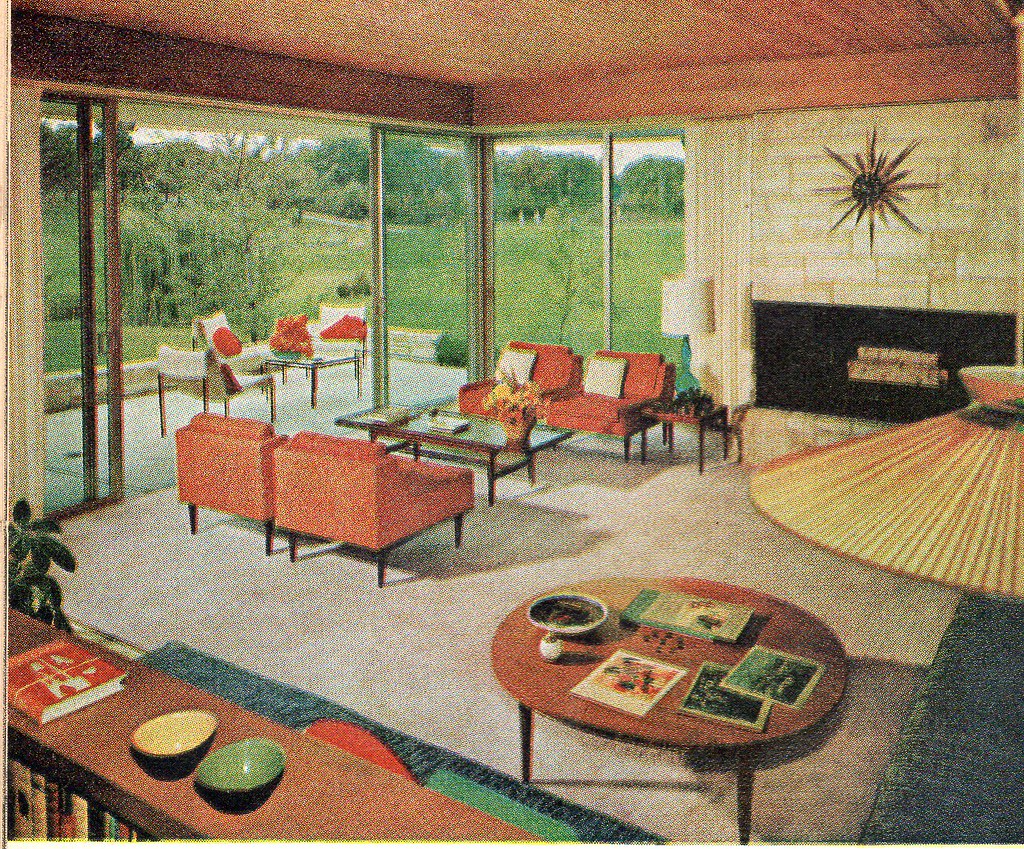 The 1960s also introduced a wave of new technology that greatly influenced living room design. The television, which had become a staple in most households, became a focal point in the living room. Furniture and decor were designed to accommodate the TV, and the layout of the room was often centered around it. Other technological advancements, such as hi-fi systems and record players, also made their way into the living room and added to the modern and futuristic feel of the space.
In Conclusion
The 1960s was a decade of change and innovation in American living room design. With the influence of mid-century modern design, the rise of bold colors and patterns, the emergence of open floor plans, and the incorporation of technology, the living room became a space for self-expression and modern living. These design elements continue to inspire and influence living room design to this day, making the 1960s a pivotal era in house design.
The 1960s also introduced a wave of new technology that greatly influenced living room design. The television, which had become a staple in most households, became a focal point in the living room. Furniture and decor were designed to accommodate the TV, and the layout of the room was often centered around it. Other technological advancements, such as hi-fi systems and record players, also made their way into the living room and added to the modern and futuristic feel of the space.
In Conclusion
The 1960s was a decade of change and innovation in American living room design. With the influence of mid-century modern design, the rise of bold colors and patterns, the emergence of open floor plans, and the incorporation of technology, the living room became a space for self-expression and modern living. These design elements continue to inspire and influence living room design to this day, making the 1960s a pivotal era in house design.
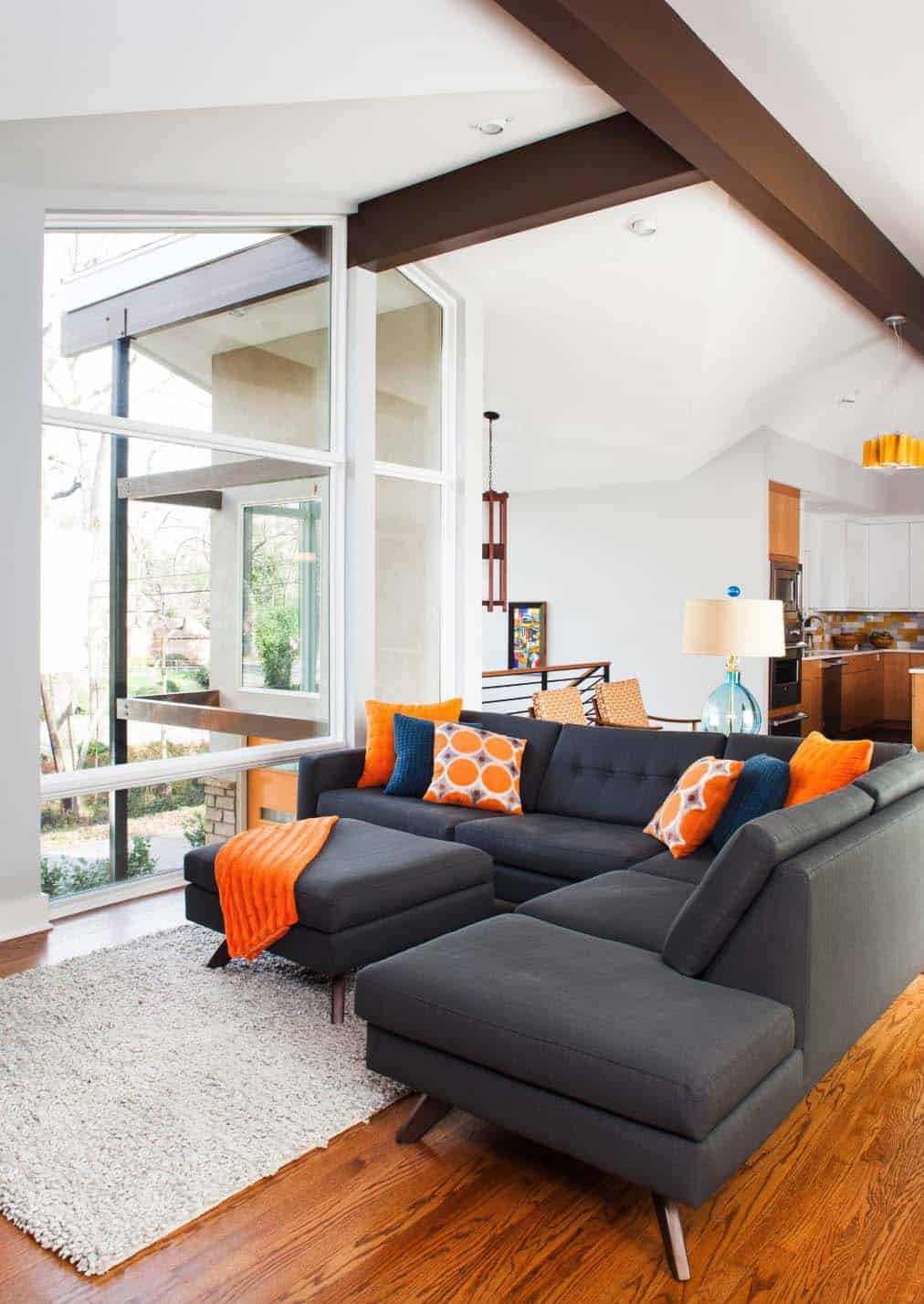
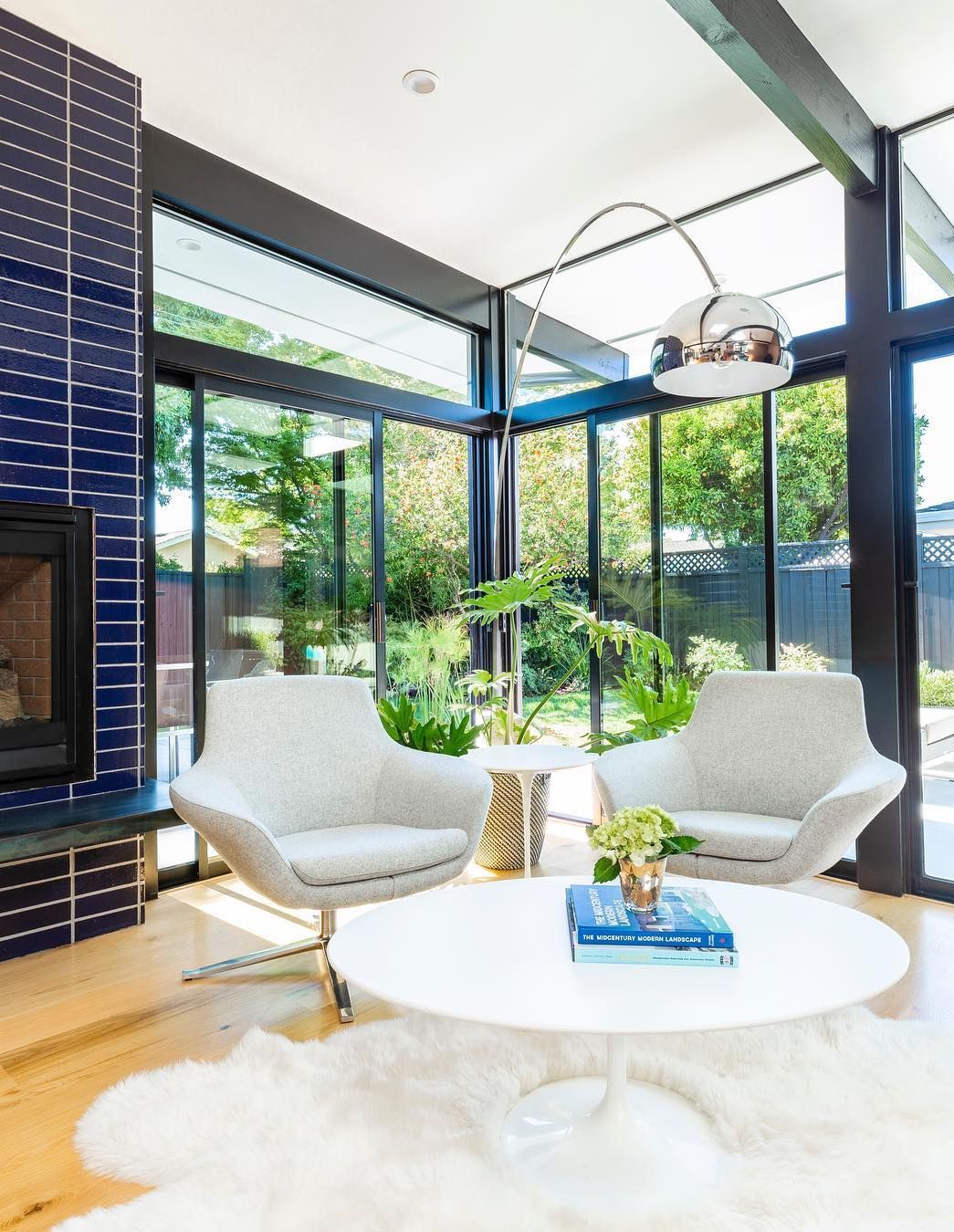
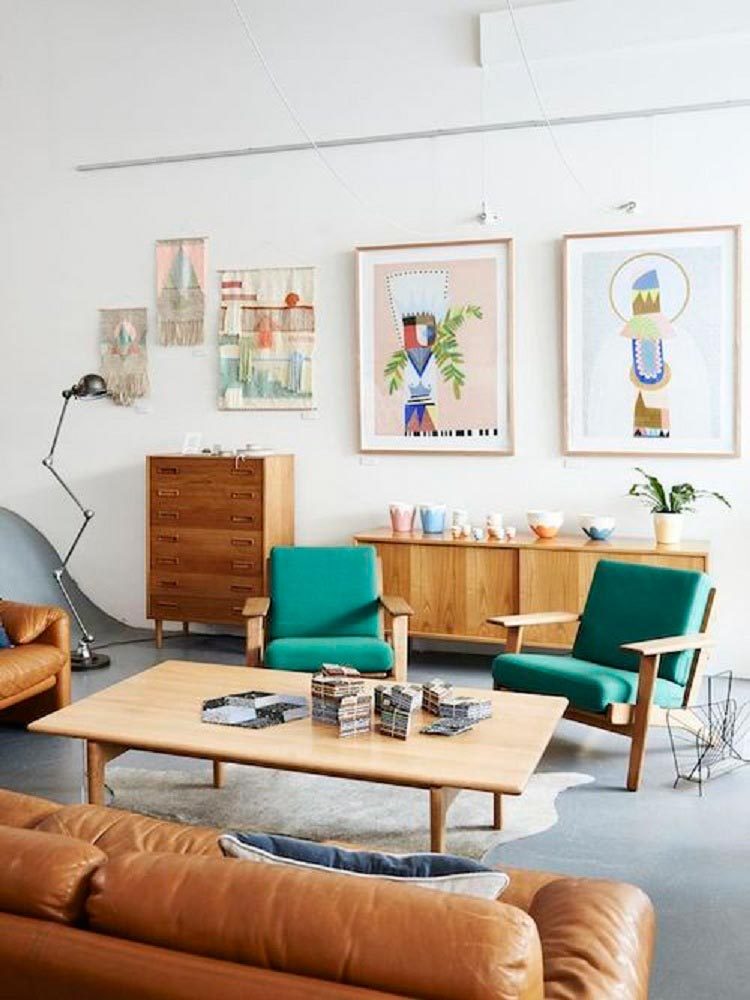
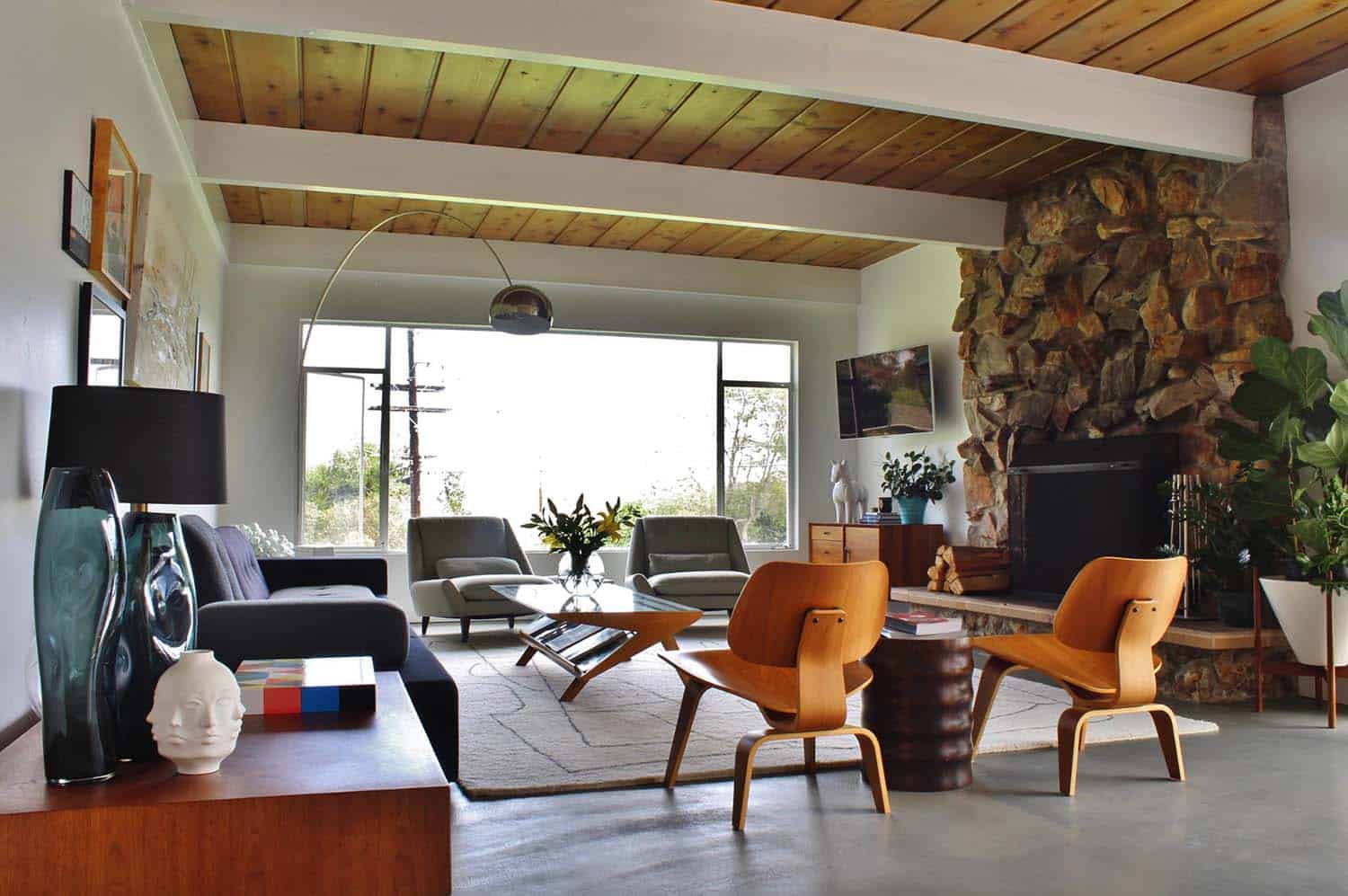
/GettyImages-999097260-bc2caabf10d946418e99772718d55ee2.jpg)



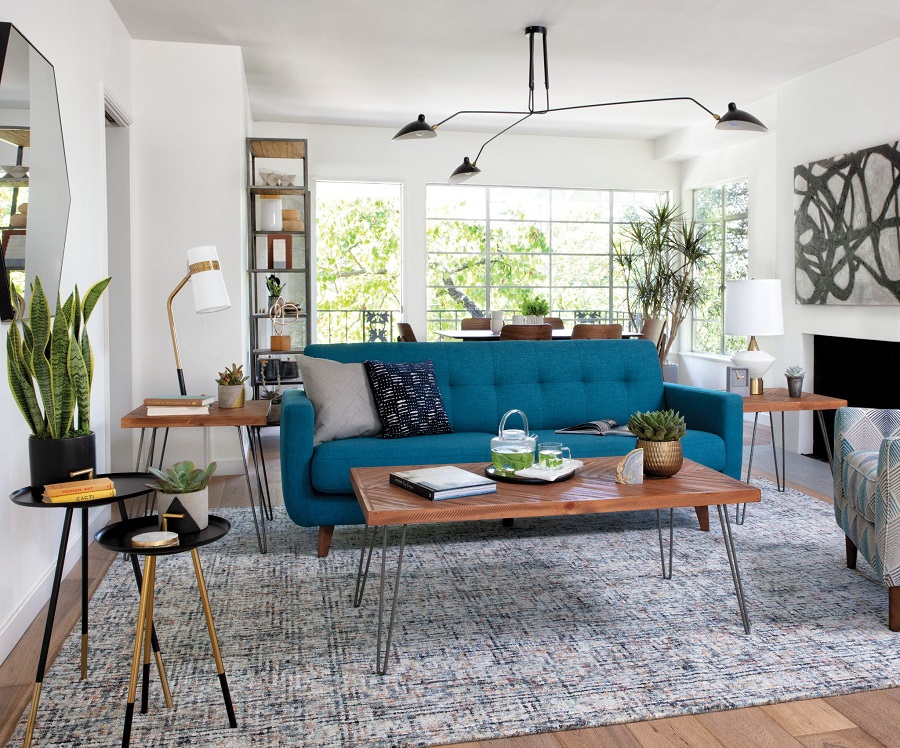

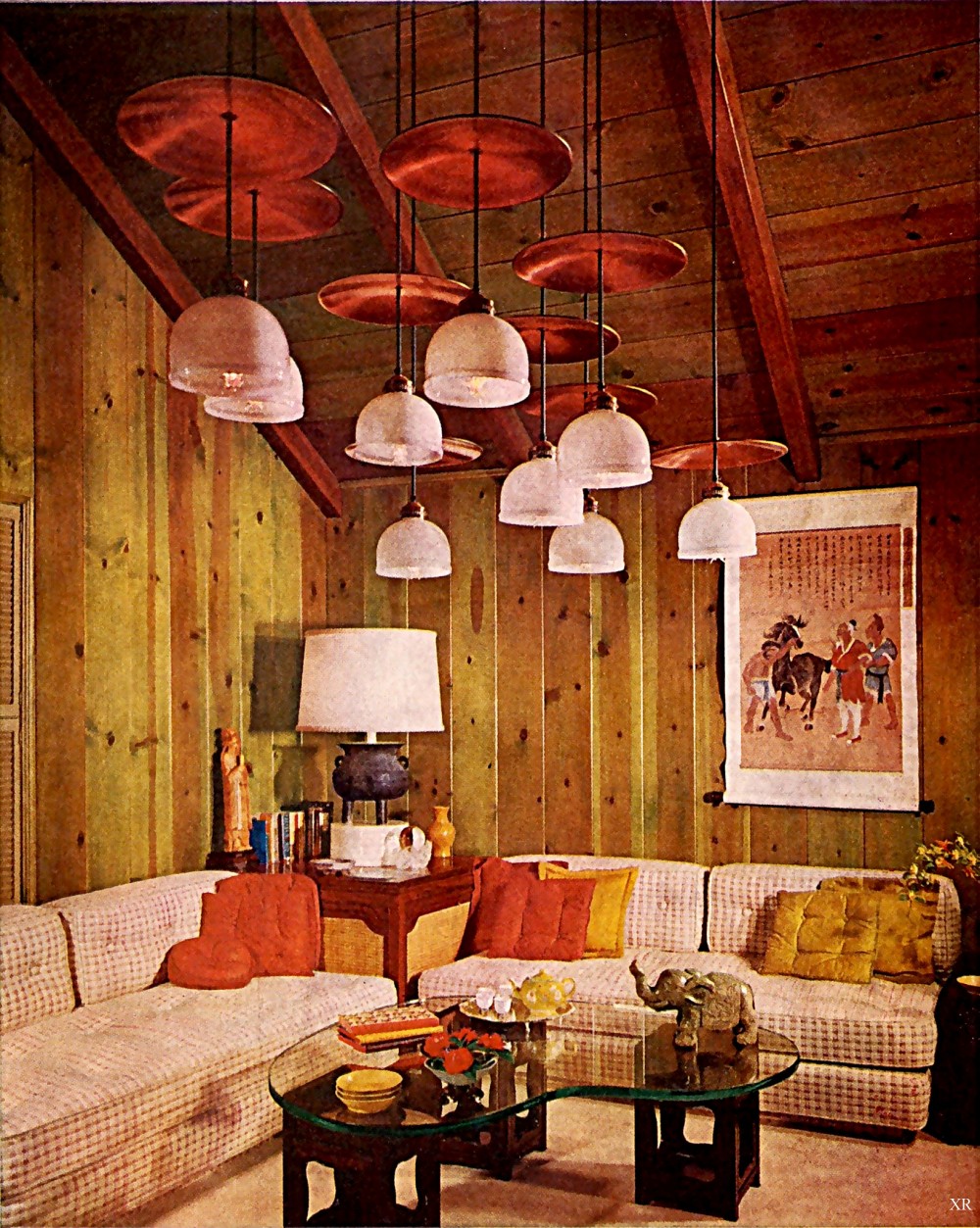
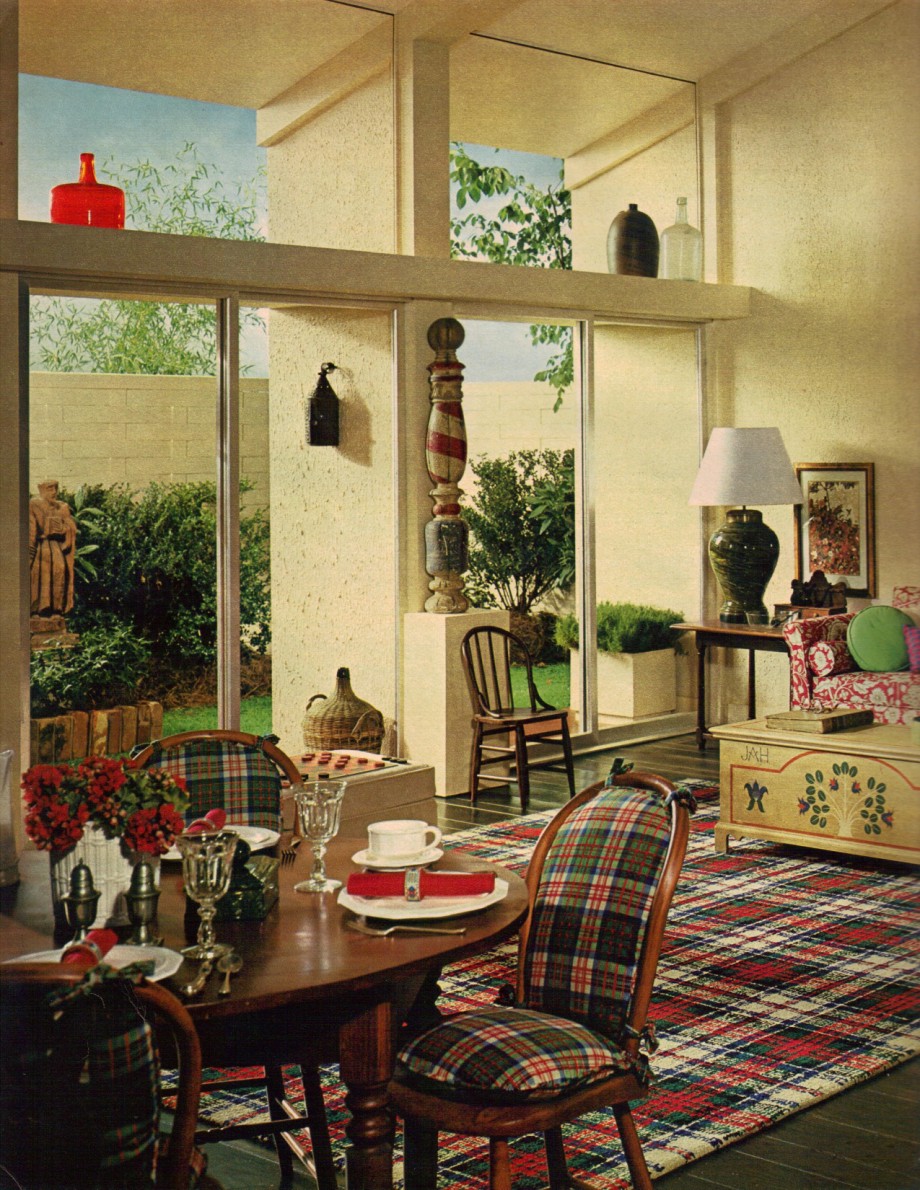

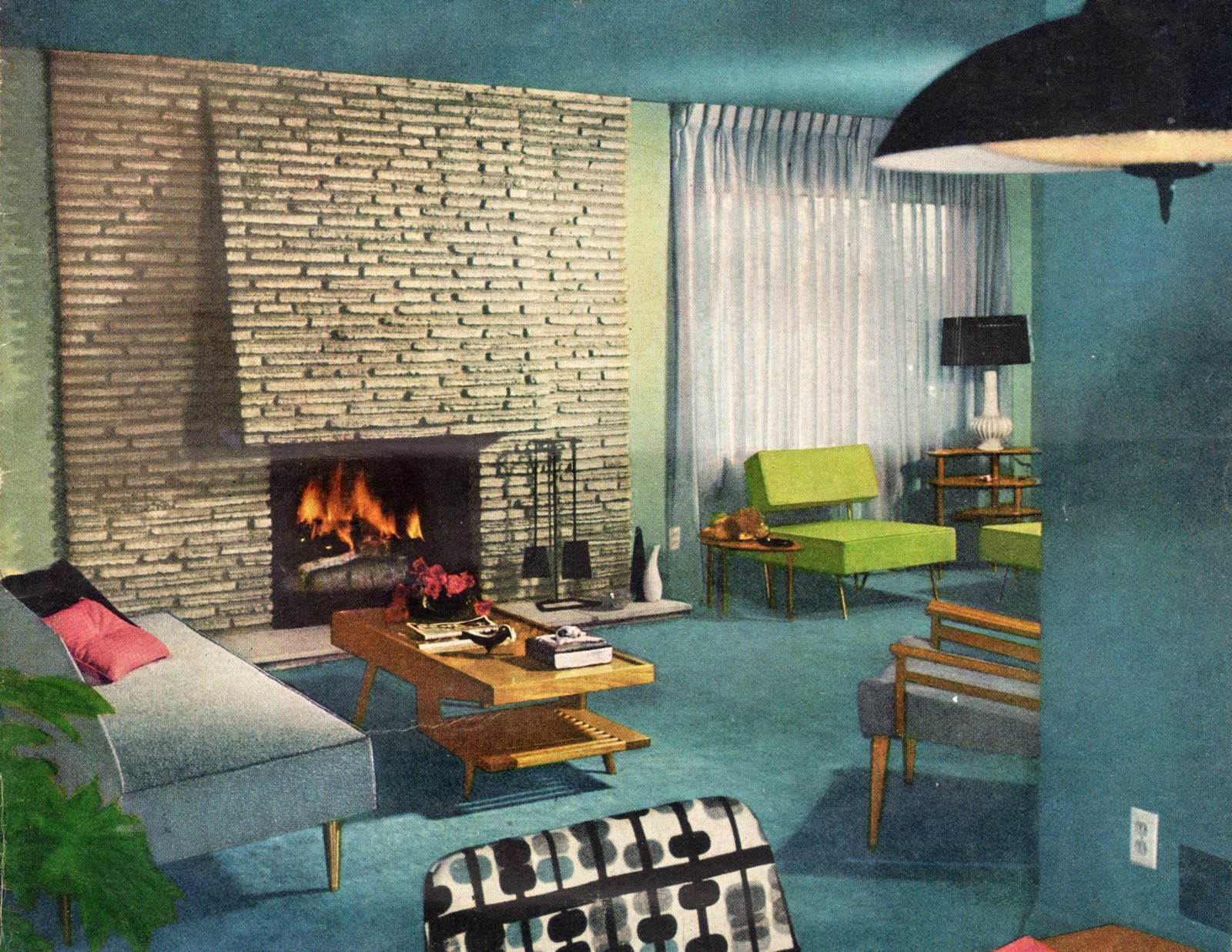






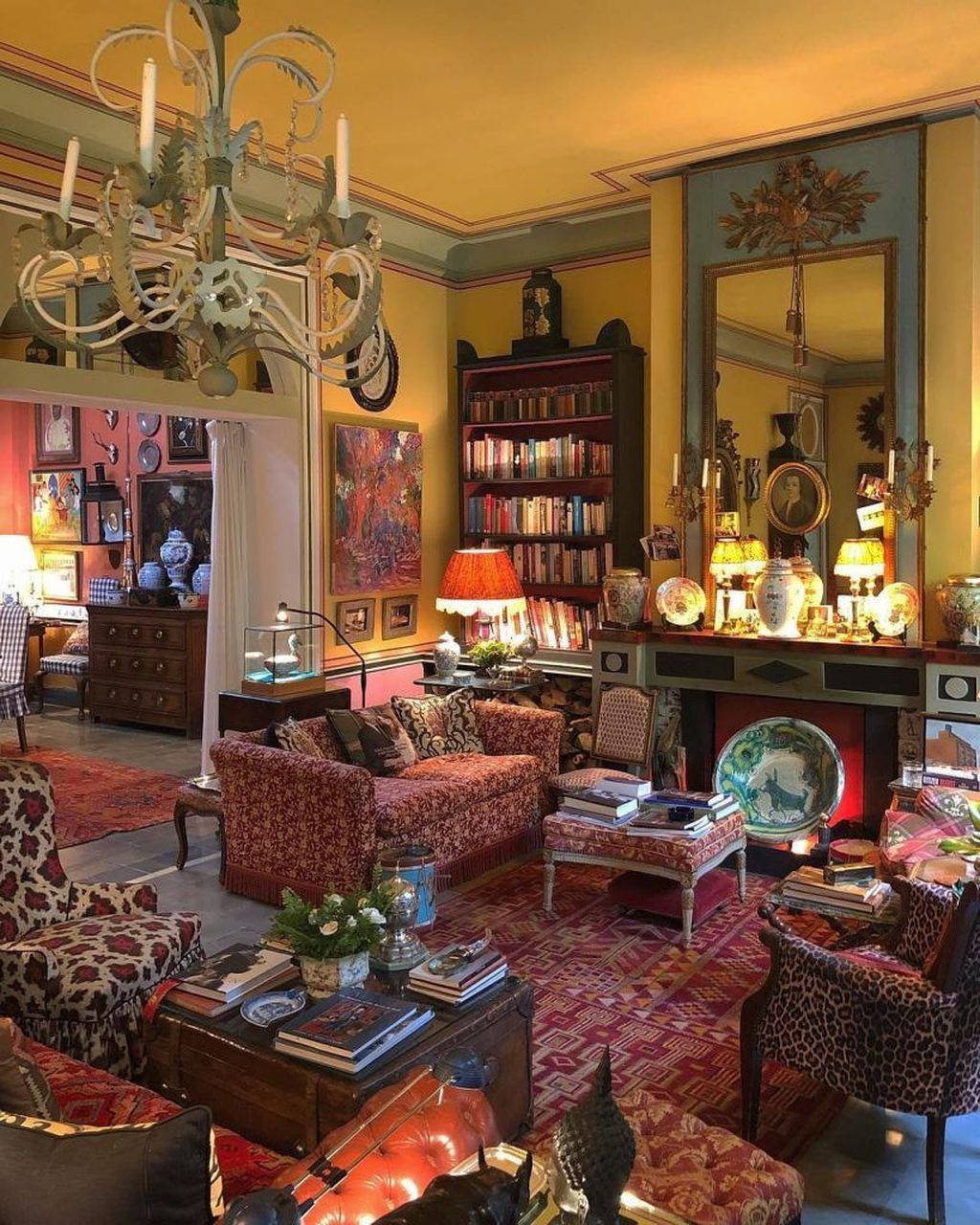


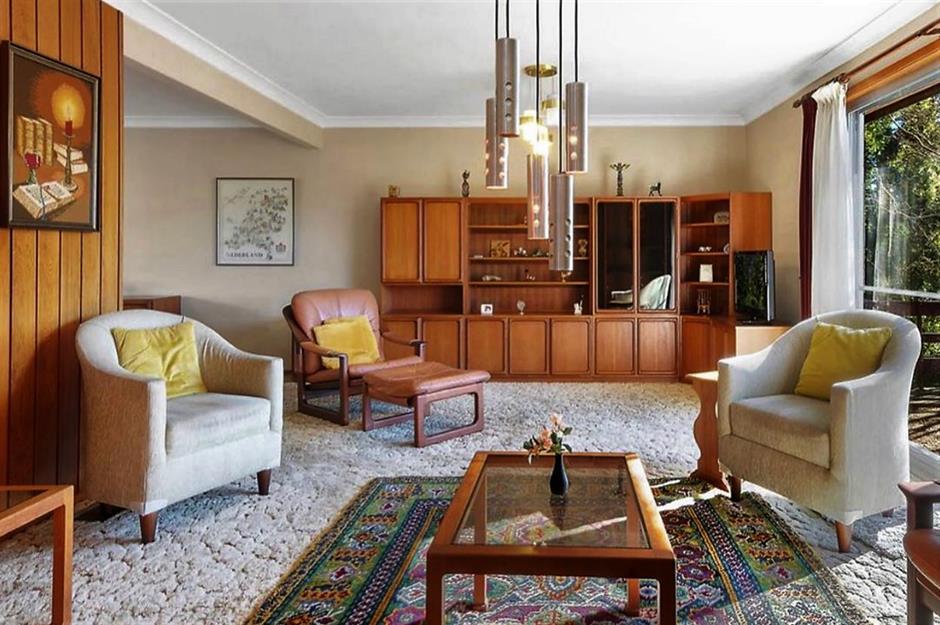
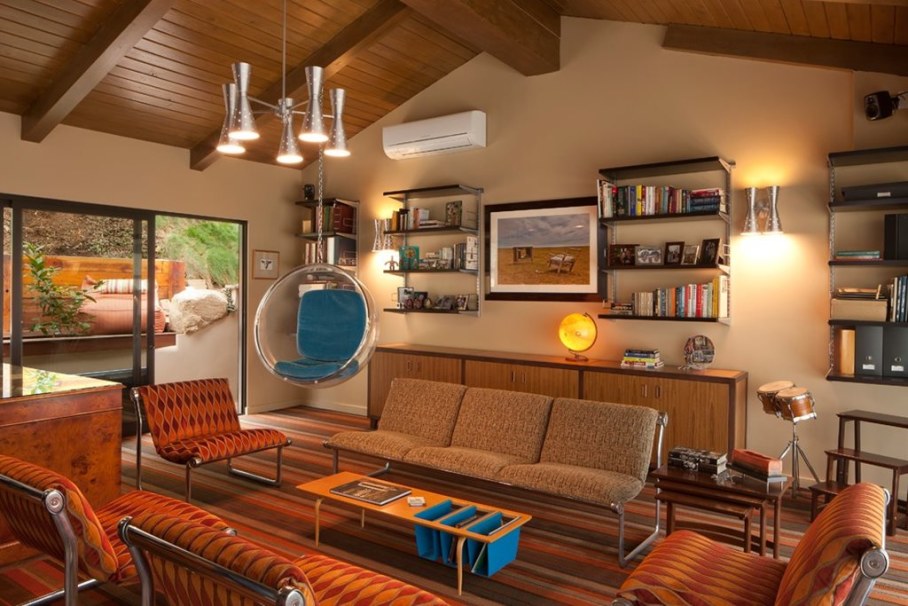
/vintage-living-room-interior-835739830-5a69fde6eb97de001abe5d85.jpg)
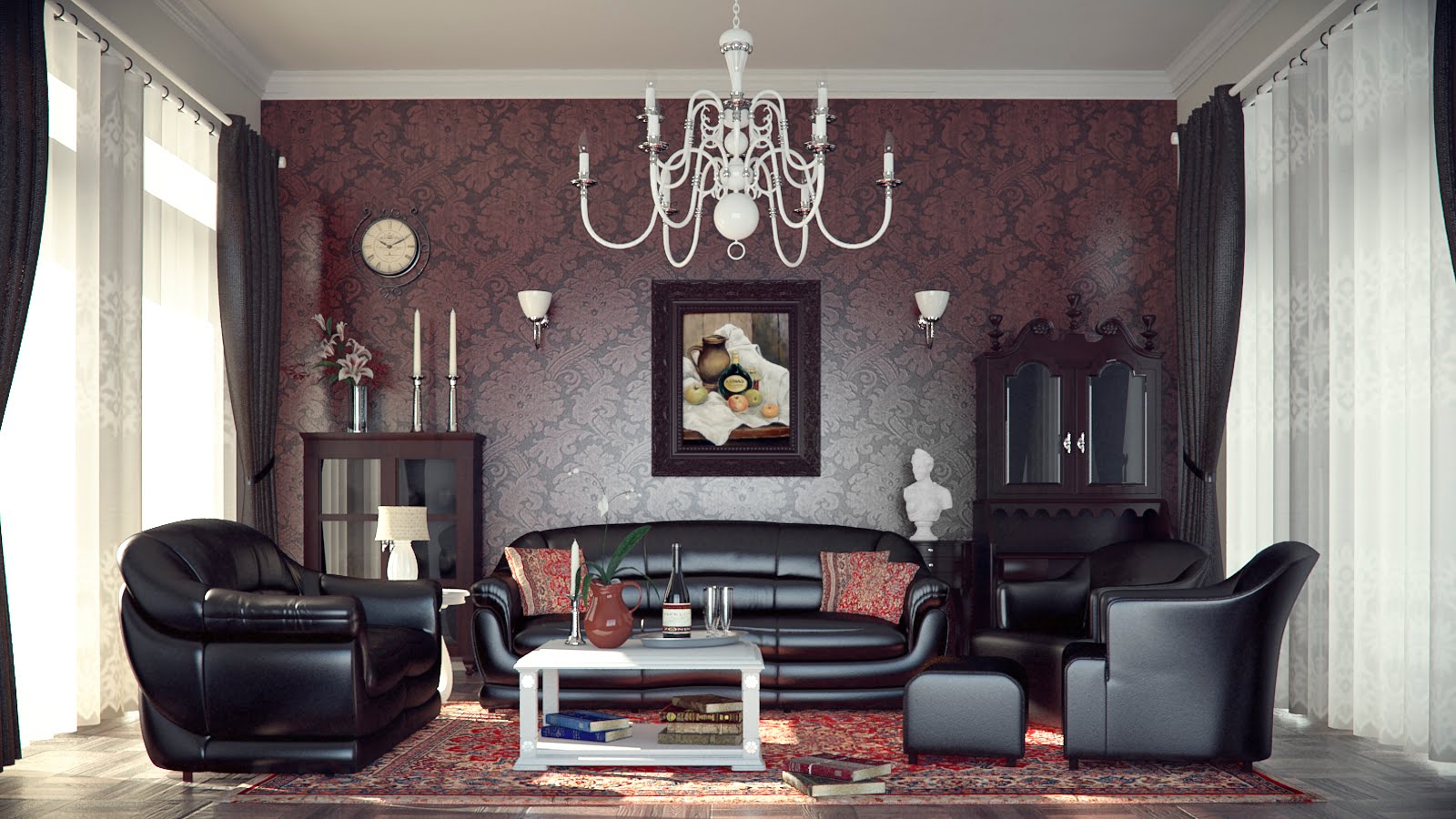



:max_bytes(150000):strip_icc()/Homepolish-interior-design-0a196-5ac8ed89642dca0036d63c14.jpg)








